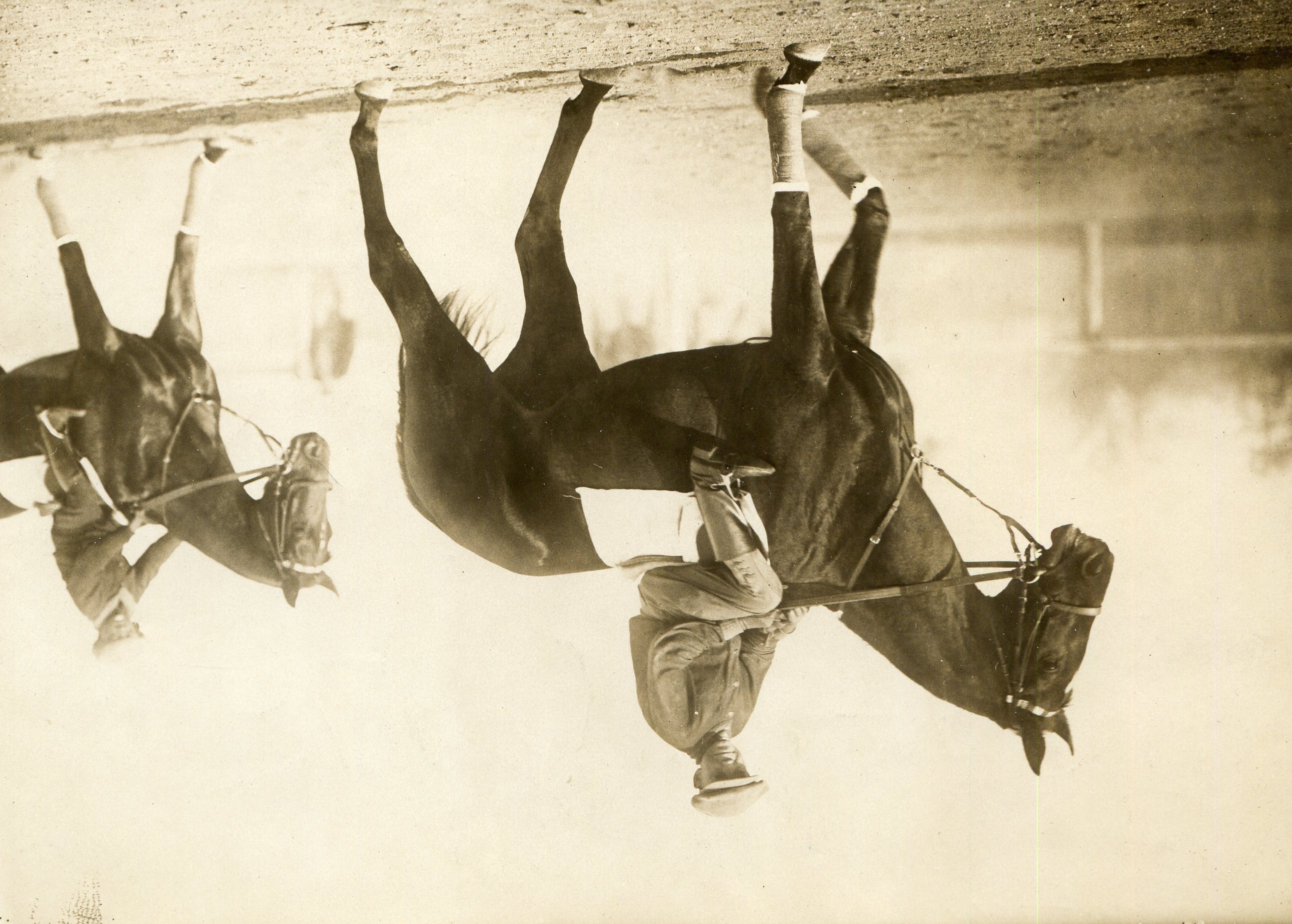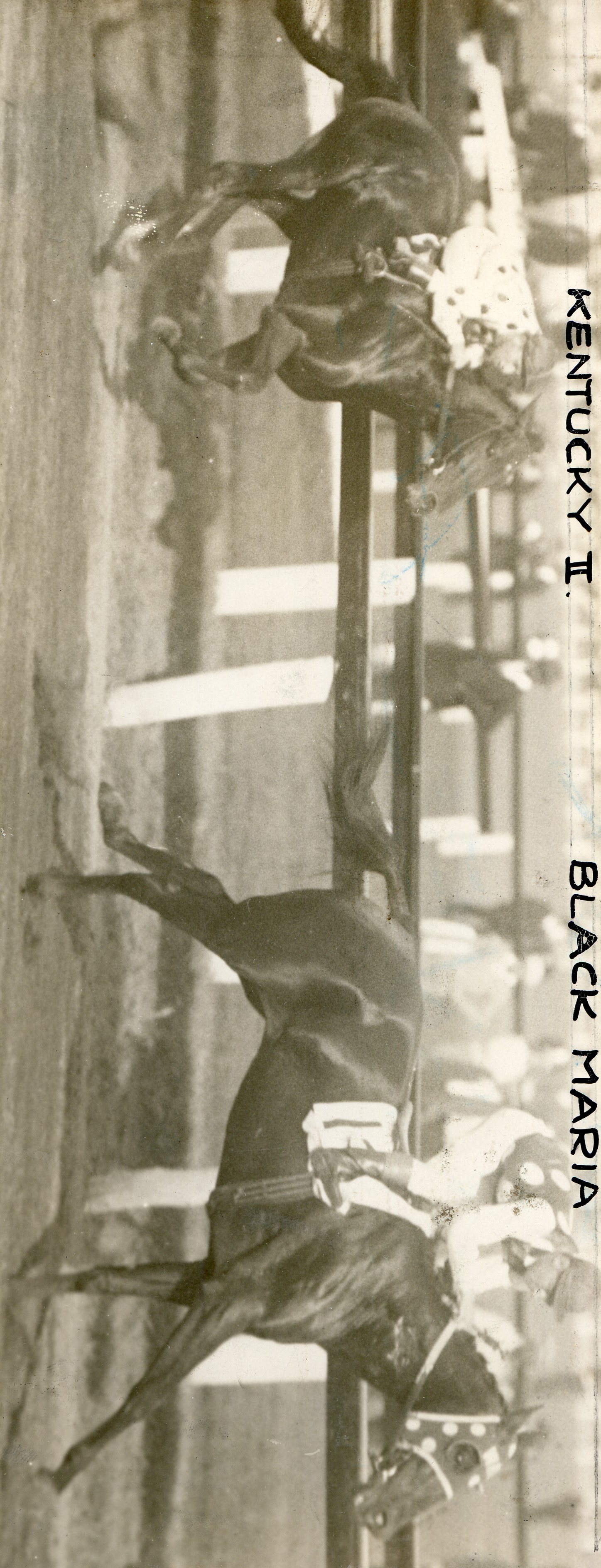Historical horse profile: Black Maria

Three-time champion filly won both the Kentucky Oaks and inaugural Whitney
By Brien Bouyea
Hall of Fame and Communications Director
Black Maria didn’t exactly set the racing world on fire when she made her career debut at Saratoga on Aug. 5, 1925. In a 5½-furlong maiden event, the Kentucky-bred daughter of Black Toney was never a factor, finishing last in the field of 10, beaten 16 lengths. It was an inauspicious unveiling to say the least.
After being defeated twice more at the Spa in the next 10 days, Black Maria broke her maiden on her fourth attempt. She was then trounced in the Hopeful Stakes, finishing ninth of 14, to conclude her juvenile summer at Saratoga with a lone victory in five outings. There would be better days ahead … much better.
During the next three years, Black Maria emerged as one racing’s top performers, thriving against both male and female competition, winning numerous prestigious races, and earning adoration from the press and race fans everywhere. By the time she was retired following her 1928 season, Black Maria won 18 races — 14 of them in stakes competition — including such coveted historical prizes as the Kentucky Oaks, Metropolitan Handicap, and the inaugural Whitney Handicap. She is the only horse to have the distinction of winning both the Oaks and the Whitney.
Bred and owned by William R. Coe, Black Maria was trained by William H. Karrick. After her nondescript 2-year-old campaign, she finished fourth in her sophomore debut against males in the Wood Memorial. Next out against fillies in the Pimlico Oaks, Black Maria finished third to Rapture before earning her first win of the year in the Ladies’ Handicap at Aqueduct, in the process turning the tables on Rapture, who finished third. The Ladies’ victory set her up as a contender for the 1926 Kentucky Oaks.
In the 52nd edition of the Oaks at Churchill Downs, Black Maria sat off the early pace set by Indianapolis before “going away easily” according to the race chart to secure a four-length victory over Dark Phantom. The win earned Black Maria’s connections $10,900, the highest purse of her career.
Returning to Saratoga that summer, Black Maria finished second to Rapture in the Alabama Stakes, won the Saratoga Sales Stakes, and finished third to Hall of Famer Crusader in the Huron Handicap. In the fall, she won the Champion Filly Stakes and Twin City Handicap at Belmont, the Aqueduct Handicap, and the October Handicap at Jamaica. In the Aqueduct and October handicaps, Black Maria defeated stablemate Pompey, the champion 2-year-old colt from 1925. At the close of her season, Black Maria was regarded as the top 3-year-old filly in America. She won or placed in 15 of 17 starts that year with earnings of $56,380 to top all sophomore fillies.
As a 4-year-old in 1927, Black Maria repeated in the Aqueduct and Ladies’ handicaps, won the prestigious Metropolitan Handicap and also the Edgemere and Continental handicaps. She was first or second in 12 of her 15 races and topped the older filly and mare division with earnings of $39,839.
In 1928, her final season, Black Maria struggled to return to her best form, winning only once in her first five races. In her fifth start of the year, however, she was a strong second to 1927 Belmont Stakes winner Chance Shot in the Saratoga Handicap. Next up for Black Maria was the inaugural edition of the Whitney Handicap.
Black Maria and Chance Shot both returned for the Whitney. They were joined by 1927 Kentucky Derby winner Whiskery from the powerful stable of Harry Payne Whitney. Friar’s Hope, at odds of 100-1, rounded out the small field. Black Maria went to the lead early, but Whiskery was in front by the time they reached the clubhouse turn. On the backstretch, Whiskery extended his lead on Black Maria to two lengths, with Chance Shot less than a length back in third. Friar’s Hope was never a contender, eventually finishing 15 lengths back.
Whiskery held the lead as they turned for home. In the stretch, Hall of Fame jockey Laverne Fator made his move with Black Maria and slipped past Whiskery. Chance Shot, under Hall of Fame rider Earl Sande, was also gaining. The New York Times said, “In the stretch, Black Maria went after Whiskery, Sande let down Chance Shot, and a moment it looked as if Chance Shot would pass ahead to the victory. However, Black Maria had something left.” At the finish, it was Black Maria and Fator by three-quarters of a length in front of Chance Shot and Sande, covering the 1¼ miles in 2:06.
The Whitney was the 18th and final victory for Black Maria. She raced six more times but never made it back to the winner’s circle and was retired in November 1928. Although she only won twice as a 5-year-old, Black Maria was again regarded as the top older filly or mare, thanks in large part to defeating both a Derby and Belmont winner in the inaugural Whitney.
Overall, Black Maria posted a record of 18-14-6 from 52 starts with earnings of $110,350. Although she raced before formal voting for championships took place, Black Maria is retrospectively regarded as the champion 3-year-old filly for 1926 and the champion older filly or mare for 1927 and 1928.
Black Maria (KY)

Lifespan: 1923 ̶ 1932
Pedigree: Black Tony—Bird Loose, by Sardanapale
Breeder: William R. Coe
Owner: William R. Coe
Trainer: William H. Karrick
Career dates: 1925 ̶ 1928
Record: 52 starts, 18 wins, 14 seconds, 6 thirds
Earnings: $110,350
Honors:
- Champion 3-Year-Old Filly 1926
- Champion Older Mare 1927
- Champion Older Mare 1928
Notable:
- Won the 1926 Kentucky Oaks
- Won consecutive editions of the Aqueduct Handicap (1926, 1927)
- Won consecutive editions of the Ladies’ Handicap (1926, 1927)
- Won the 1927 Metropolitan Handicap
- Won the inaugural running of the Whitney Handicap (1928)




